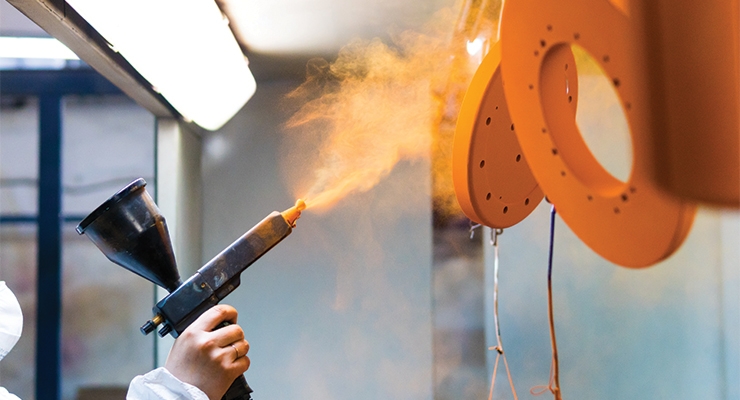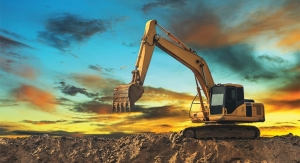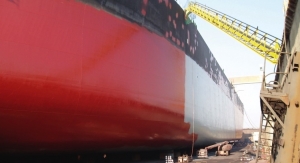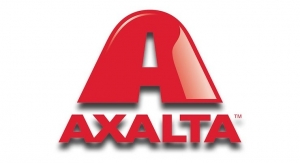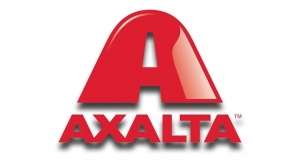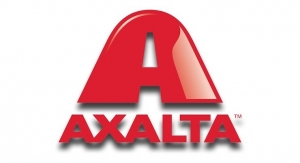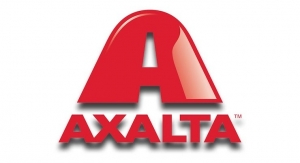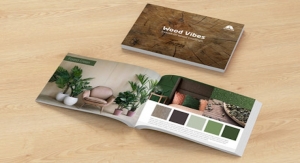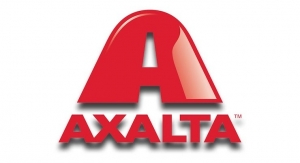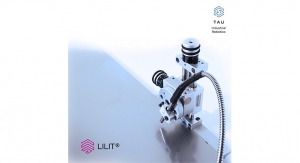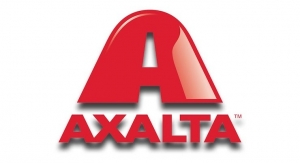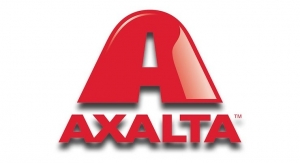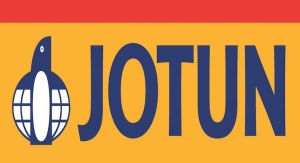Arnold Wang, China Correspondent05.31.19
In 2018, 1,336 large coatings companies produced approximately 17.6 million tons of coatings, according to a report from the National Bureau of Statistics.
This represented an increase of 5.9 percent from the adjusted output for 2017, which was 16.6 million tons. Total powder coatings output in 2018 is estimated to be 1.76 million tons, a 9.7 percent increase, reflecting faster growth for environment-friendly coatings varieties than the overall coatings industry.
Anhui Meijia New Material Co., Ltd. is the first powder coatings company listed on the stock market in China.
In 2018, Meijia’s total revenue reached 806 million yuan, a 21.2 percent increase compared to 2017. R&D cost increased by 16.85 percent, but its percentage in the total revenue is only 0.33 percent, meaning domestic companies still have lots of space for future development with investing more in R&D.
Major application areas
Home appliances, construction materials and general industrial sectors are major application areas.
After so many years in development, the share for the powder coatings used on electronic appliances shrank from around 25 percent in 2012 to 19.6 percent in 2017.
Additionally, construction materials and general industrial sectors continued increasing their shares in the same period. But unlike the automotive market sector for Western countries, this sector in China still has not become a major application area for powder coatings.
Industrial and agriculture machinery and automotive sectors only hold roughly six percent in total. Pre-coated steel plates were widely adopted in refrigerator manufacturing, which restricted the overall growth volume of powder coatings in the sector of home appliances.
Although the output of powder coatings in China is about half of the whole world, high-end powder coatings varieties such as polyurethane, acrylic and fluorocarbon are still less than one percent.
It is estimated that China has around 2,100 powder coatings producers. So, low-level competition focusing on pricing slows the industry’s speed to improve quality as a whole.
Besides, TGIC, which is under regulation restriction already in some western countries, is still widely used for polyester powder coatings, especially for the application on aluminum products.
But the growth prospect for powder coatings is very positive in China.
Environment regulations push more companies to adopt green technologies including powder coatings. And the automotive sector provides huge growth potential as well.
Right now, the penetration of powder coatings is less than two percent for all the coatings used in the automotive industry.
But some automotive companies have begun to expand their adoptions for powder coatings, which could increase the demand for powder coatings in the future.
As a matter of fact, more large players are ramping up their winning games in China, but each has their own angle and strategy. Jotun, a global leader for marine coatings, is relatively new and small in the powder coatings market.
The company’s sales for marine coatings is roughly 2.7 billion yuan. In comparison, its powder coatings’ sales are only around 100 million yuan.
Jotun plans to expand its sales in the architecture area by working closely with designers and large customers.
But a new phenomenon seen more and more is international companies wanting to go independent in China, ending existing partnerships with local players.
Faster-responding speed and business flexibility are the top reasons behind the decisions.
At the end of 2018, AkzoNobel acquired all Swire Group’s shares in the joint venture previously owned jointly by both. At the same time, Swire said it sold all of its coatings interests – estimated to be 2.7 billion Hong Kong dollars – to AkzoNobel. The joint venture sold mainly decorative coatings under the Dulux brand.
The company’s profit in the first half of 2018 dropped by 29.2 percent.
Besides AkzoNobel, Axalta Coating also followed the suit. Both Axalta and Yongjia announced that they will disassemble the joint venture they co-invested for many years in China.
According to a news release, Axalta will get the Qingpu plant from the new deal, and Yongjia will get the other four plants, namely the Huangshan, Chengdu, Dongguan, and Jinan plants.
Axalta expressed that the new move will help Axalta speed up the introduction of its global quality powder coatings technologies into China market.
Yongjia also said it will increase R&D investment and increase production capacities in the future.
The architectural coatings market will be a warzone for large players in the future, with leading companies adding new capacities throughout China. San Ke Shu said its new plant in Anhui went into operation in April. The new plant, which the company invested 686 million yuan into, produces architectural coatings, waterproof coatings, insulation system and floor coatings.
San Ke Shu currently has nine manufacturing bases and 43 jointly operated factories in China and is one of the largest architecture coatings companies in China.
U.S. President Donald Trump’s administration raising the tariff from 10 percent to 25 percent on 200 billion dollars goods exported from China will push wood furniture, home appliance and electronic devices, and equipment manufacturers, etc. to move their factories to other countries.
This represented an increase of 5.9 percent from the adjusted output for 2017, which was 16.6 million tons. Total powder coatings output in 2018 is estimated to be 1.76 million tons, a 9.7 percent increase, reflecting faster growth for environment-friendly coatings varieties than the overall coatings industry.
Anhui Meijia New Material Co., Ltd. is the first powder coatings company listed on the stock market in China.
In 2018, Meijia’s total revenue reached 806 million yuan, a 21.2 percent increase compared to 2017. R&D cost increased by 16.85 percent, but its percentage in the total revenue is only 0.33 percent, meaning domestic companies still have lots of space for future development with investing more in R&D.
Major application areas
Home appliances, construction materials and general industrial sectors are major application areas.
After so many years in development, the share for the powder coatings used on electronic appliances shrank from around 25 percent in 2012 to 19.6 percent in 2017.
Additionally, construction materials and general industrial sectors continued increasing their shares in the same period. But unlike the automotive market sector for Western countries, this sector in China still has not become a major application area for powder coatings.
Industrial and agriculture machinery and automotive sectors only hold roughly six percent in total. Pre-coated steel plates were widely adopted in refrigerator manufacturing, which restricted the overall growth volume of powder coatings in the sector of home appliances.
Although the output of powder coatings in China is about half of the whole world, high-end powder coatings varieties such as polyurethane, acrylic and fluorocarbon are still less than one percent.
It is estimated that China has around 2,100 powder coatings producers. So, low-level competition focusing on pricing slows the industry’s speed to improve quality as a whole.
Besides, TGIC, which is under regulation restriction already in some western countries, is still widely used for polyester powder coatings, especially for the application on aluminum products.
But the growth prospect for powder coatings is very positive in China.
Environment regulations push more companies to adopt green technologies including powder coatings. And the automotive sector provides huge growth potential as well.
Right now, the penetration of powder coatings is less than two percent for all the coatings used in the automotive industry.
But some automotive companies have begun to expand their adoptions for powder coatings, which could increase the demand for powder coatings in the future.
As a matter of fact, more large players are ramping up their winning games in China, but each has their own angle and strategy. Jotun, a global leader for marine coatings, is relatively new and small in the powder coatings market.
The company’s sales for marine coatings is roughly 2.7 billion yuan. In comparison, its powder coatings’ sales are only around 100 million yuan.
Jotun plans to expand its sales in the architecture area by working closely with designers and large customers.
But a new phenomenon seen more and more is international companies wanting to go independent in China, ending existing partnerships with local players.
Faster-responding speed and business flexibility are the top reasons behind the decisions.
At the end of 2018, AkzoNobel acquired all Swire Group’s shares in the joint venture previously owned jointly by both. At the same time, Swire said it sold all of its coatings interests – estimated to be 2.7 billion Hong Kong dollars – to AkzoNobel. The joint venture sold mainly decorative coatings under the Dulux brand.
The company’s profit in the first half of 2018 dropped by 29.2 percent.
Besides AkzoNobel, Axalta Coating also followed the suit. Both Axalta and Yongjia announced that they will disassemble the joint venture they co-invested for many years in China.
According to a news release, Axalta will get the Qingpu plant from the new deal, and Yongjia will get the other four plants, namely the Huangshan, Chengdu, Dongguan, and Jinan plants.
Axalta expressed that the new move will help Axalta speed up the introduction of its global quality powder coatings technologies into China market.
Yongjia also said it will increase R&D investment and increase production capacities in the future.
The architectural coatings market will be a warzone for large players in the future, with leading companies adding new capacities throughout China. San Ke Shu said its new plant in Anhui went into operation in April. The new plant, which the company invested 686 million yuan into, produces architectural coatings, waterproof coatings, insulation system and floor coatings.
San Ke Shu currently has nine manufacturing bases and 43 jointly operated factories in China and is one of the largest architecture coatings companies in China.
U.S. President Donald Trump’s administration raising the tariff from 10 percent to 25 percent on 200 billion dollars goods exported from China will push wood furniture, home appliance and electronic devices, and equipment manufacturers, etc. to move their factories to other countries.

